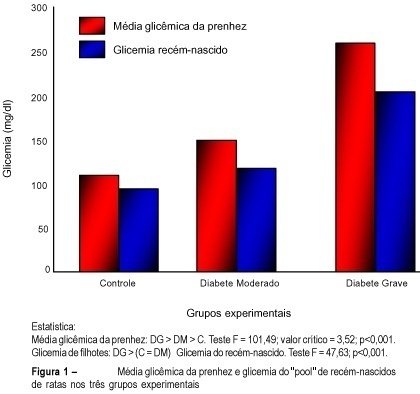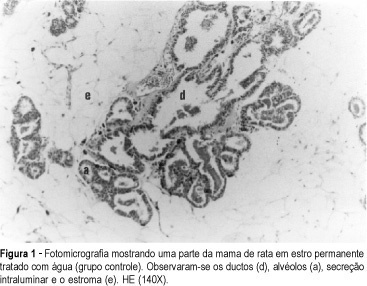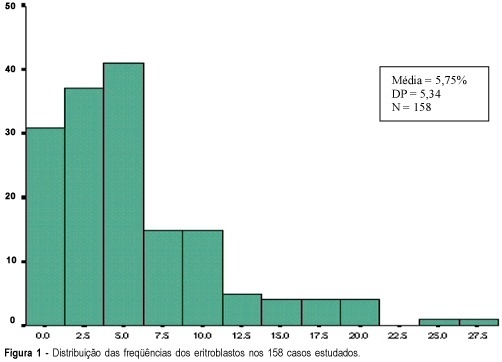Summary
Revista Brasileira de Ginecologia e Obstetrícia. 2001;23(10):621-626
DOI 10.1590/S0100-72032001001000002
Purpose: to compare bone mineral density (BMD) of postmenopausal women with and without the antecedent of tubal ligation, as well as to evaluate the associated factors that affect the bone mineral density of femur and lumbar spine of both groups. Methods: 70 postmenopausal women in each group were analyzed at CAISM-UNICAMP, during the year of 1998. All women answered a questionnaire about some clinical and reproductive characteristics and underwent bone densitometry (Lunar DPX) to measure bone mineral density of the femur and lumbar spine. Statistical analyses were performed using Student's t-test, Fisher`s exact test, Pearson c² test, Bonferroni`s test and multiple regression analysis. Results: mean age of patients was 53.2 years and for controls it was 52.6 years. Mean age of 48 years at menopause was similar in both groups. Mean age at tubal ligation surgery was 33.7 years and time since surgery was 18 years. The multiple comparison of the average bone mineral density of femur and lumbar spine did not show statistical differences between the groups. The percentage distribution of the T-score categories of femur and lumbar spine, classified into normal and altered, also did not show statistical differences between both groups. Multiple regression analysis showed that bone mineral density of femur was directly associated with body mass index, but age was indirectly associated. The variables dark skin, parity, age at menopause, educational level and body mass index were directly associated with bone mineral density of lumbar spine, but age at menarche was inversely associated. Conclusion: these findings suggest that tubal ligation does not seem to cause an additional reduction in bone mineral density when evaluated in postmenopause.
Summary
Revista Brasileira de Ginecologia e Obstetrícia. 2001;23(1):9-14
DOI 10.1590/S0100-72032001000100002
Purpose: to evaluate the effects of maternal diabetes on the fetal lung phospholipid profiles of rats with moderate and severe diabetes measuring lecithin (L), sphingomyelin (S), phosphatidyl-glycerol (PG), phosphatidyl-inositol (PI), and the relationships between L/S and PG/PI. Methods: fifty-four mature Wistar rats were submitted to experimental diabetes and pregnancy¹. Diabetes was induced by alloxan (42 mg/kg of weight, iv) and three groups were formed: control; moderate diabetes (MD), with glycemia levels between 120 and 200 mg/dl, and severe diabetes (SD), with glycemia levels higher than 200 mg/dl. On the 21st day, cesarian section was performed, and the fetal lungs were macerated and pooled. The phospholipids were measured by unidirectional thin-layer chromatography. Results: 1) the fetal lungs of the rats with moderate diabetes showed higher weight (0.159 g) and lower concentration of PG (3.0 µg/ml) and PI (3.4 µg/ml) than the controls, and the same relationship between L/S (2.2) and PG/PI (2.0). The fetal lungs of the rats with severe diabetes showed lower weight (0.145 g), the same values of L/S (1.9) and PG/PI (2.1), and lower PI (5.1 µg/ml) value than the controls. Conclusions: 1) the pulmonary maturity retardation in the pups of rats with moderate diabetes is explained by the higher pulmonary weight associated with lower concentration of PG and PI; 2) the pulmonary maturity acceleration in the pups of rats with severe diabetes is explained by the lower pulmonary weight associated with the same concentration of PG and PI.

Summary
Revista Brasileira de Ginecologia e Obstetrícia. 2001;23(1):47-51
DOI 10.1590/S0100-72032001000100007
Purpose: to evaluate the incidence of thermal damage to the specimens excised through large loop excision of the transformation zone (LLETZ) and to determine qualitatively and quantitatively the thermal injury to the ectocervical and endocervical epithelia as well as the influence of the menstrual phase on such process. Methods: we performed a prospective study of 100 patients with high-grade squamous intraepithelial lesions (HGSIL). Thermal damage was subdivided into three grades according to Messing et al¹. Results: thermal injury occurred in all the cases, however, through statistical analysis we found that in 91% of the cases it was insignificant, thus leading to a precise histological evaluation, hence to measure the thermal injury was unnecessary. The grade and extent of thermal damage in excised specimens using LLETZ had no relation to the menstrual phase. The extension of thermal tissue alteration in the endocervical epithelia was 271,6 mu while the extension in ectocervical epithelia was 254,8 mu, showing that the extension of thermal damage is significantly higher in endocervical epithelia. Of the one hundred patients, 80 were in menacme and 20 in menopause correlating the grade and extension of thermal damage with the menstrual state. Conclusion: there was no significant difference in both qualitative and quantitative evaluations. There is no need to measure the thermal damage.
Summary
Revista Brasileira de Ginecologia e Obstetrícia. 2001;23(1):41-45
DOI 10.1590/S0100-72032001000100006
Purpose: the morphologic and morphometric aspects of the breasts of rats in permanent estrus submitted to danazol were studied. Methods: the animals were divided into three groups: group A (n = 12) received water and was used as control, group B (n = 13) was exposed to 20 mg danazol kg-1 day-1, and group C (n = 10) was exposed to 80 mg danazole kg-1 day-1 for 35 consecutive days. The microscopic study evaluated the ductal and acinar distribution. Histometry of the relationship duct/stroma was based on the principles of stereology with a Zeiss k-10X ocular, with Integrationsplatte I reticulum of Weibel of 25 hits, with 100X magnification. For each studied section, 10 aleatoric fields were counted, with a total of 250 points. The variance analysis test (Kruskal-Wallis) was applied to compare the three groups in relation to the mean number of alveoli and ducts (alpha = 0.05). Results: when submitted to morphological study, all groups presented lobules with alveoli lined with cubic cells with nuclei in their central or basal portion. Small amounts of eosinophilic material were observed in some cases in the lumen, with no differences between the groups. At morphometry, with a magnification of 100X, a mean number of 28.6 ducts/10 fields was found in group A, 28.4 in group B and 29.2 in group C (Kruskal-Wallis test: Hcrit = 0.1). The mean number of alveoli in 10 fields was 5.9, 9.3 and 6.5 in groups A, B and C, respectively (Kruskal-Wallis test: Hcrit = 2.9), with no significant differences between the groups. Conclusion: danazol did not cause any changes in the morphology and morphometry of the permanent estrus mammary epithelium.

Summary
Revista Brasileira de Ginecologia e Obstetrícia. 2001;23(1):31-37
DOI 10.1590/S0100-72032001000100005
Purpose: to evaluate the prognosis of fetal omphalocele after prenatal diagnosis. Methods: fifty-one cases with prenatal diagnosis of fetal omphalocele were divided into three groups: group 1, isolated omphalocele; group 2, omphalocele associated with structural abnormalities and normal karyotype; group 3, omphalocele with abnormal karyotype. The data were analyzed for overall survival rate and postsurgery survival, considering associated malformations, gestational age at delivery, birth weight and size of omphalocele. Results: group 1 corresponded to 21% (n = 11), group 2, 55% (n = 28) and group 3,24% (n = 12). All of Group 3 died, and trisomy 18 was the most frequent chromosomal abnormality. The survival rate was 80% for group 1 and 25% for group 2. Sixteen cases underwent surgery (10 isolated and 6 associated), 81% survived (8 isolated and 5 associated). The median birth weight was 3,140 g and 2,000 g for survivals and non-survivals after surgery, respectively (p = 0.148), and the corresponding gestational age at delivery was 37 and 36 weeks (p = 0.836). The ratio of omphalocele/abdominal circumference decreased with gestation, 0.88 between 25-29 weeks and 0.65 between 30-35 weeks (p = 0.043). The size of omphalocele was not significantly different between the 3 groups (p = 0.988), and it was not associated to postsurgery prognosis (p = 0.553). Conclusion: the overall and postsurgery survival rates were 25 and 81%, respectively. Associated malformations were the main prognostic factor in prenatally diagnosed omphaloceles, since they are associated with prematurity and low birth weight.
Summary
Revista Brasileira de Ginecologia e Obstetrícia. 2001;23(1):21-27
DOI 10.1590/S0100-72032001000100004
Purpose: nucleated red blood cell counts are increased in several hypoxic conditions. The authors aimed to establish if there is a correlation between erythroblast counts in the umbilical vein of newborns and the presence of perinatal hypoxia detected by acid-base balance parameters. Methods: blood samples were obtained from the umbilical vein of pregnant subjects with at least 37 weeks of gestation attended at the Hospital de Alvorada-RS, just before the newborns' first breathing movement. Part of the blood was placed in an EDTA-containing vial and white and red blood cells were analyzed. The remaining amount of blood was aspirated into insulin type syringe previously washed with heparin and pH, pO2, pCO2 and acid-base excess/deficit were analyzed. Slides were also prepared with the panoptic stain for visual identification and count of the erythroblast number. The erythroblast/leukocyte ratio was calculated. Results: of the 158 cases included in the study, 55 were considered free of perinatal hypoxia. In this population, the average erythroblast rate was 3.9% with a standard deviation of 2.8%. The minimum and maximum values were 0% and 10%, respectively. When considering all the cases, the average was 5.7%, with a standard deviation of 5.3%. The minimum and maximum values were 0% and 28%, respectively. Application of Pearson's test for the analysis of the erythroblast rate and acid-base parameters showed a significant correlation for pH and pCO2. The construction of a Receiver Operation Curve showed that for an erythroblast rate of 5%, a 7.25-pH cutoff yields a sensitivity of 54% and a specificity of 56%. Out of the 23 newborns whose normoblast rate was greater than 10%, there was acidemia in 7 (30.4%), 11 (48.7%) were large for gestational age, 3 (13%) were small for gestational age, 7 (30.4%) were anemic, and in 3 (13%) there were no abnormalities. Conclusions: in newborns from uncomplicated pregnancies and deliveries, the erythroblast rate was less than 10%. When it was greater than 10%, a correlation was found mainly with large or small for gestational age, fetal anemia and acidemia.

Summary
Revista Brasileira de Ginecologia e Obstetrícia. 2001;23(1):15-20
DOI 10.1590/S0100-72032001000100003
Purpose: to evaluate the seroprevalence of infection caused by HSV-2 among pregnant women delivering at the University Hospital, Faculty of Medicine of Ribeirão Preto (UHFMRP-USP) and to standardize laboratory techniques to be used for this purpose. Methods: a total of 1500 blood samples from pregnant women seen at the Obstetric Center of the Department of Gynecology and Obstetrics, UHFMRP-USP, between January 1st and October 31st, 1996, were evaluated. To determine the real prevalence of HSV-2 infection, the ELISA technique was standardized but, during its initial use, it was found to be not sufficiently specific to discriminate between the two viral types (75%). Thus, it became necessary to use a more specific technique and the method standardized for this purpose was Western blot, which can detect the specific HSV-2 viral protein. Results: the seroprevalence of herpes infection induced by the two viral types (HSV-1 and HSV-2) was 94.5% when ELISA was used. With the use of Western blot, a 32% seroprevalence of HSV-2 infection was detected in the studied population, whether symptomatic or asymptomatic. Conclusion: a high prevalence of carrier status for HSV-2 and HSV-1 infection was detected, as shown by the high rate of positivity for antibodies against this virus. ELISA did not show sufficient specificity to discriminate between HSV-2 and HSV-1 antibodies.
Summary
Revista Brasileira de Ginecologia e Obstetrícia. 2001;23(6):383-390
DOI 10.1590/S0100-72032001000600007
Purpose: to evaluate the ultrasonographic parameters associated with perinatal mortality increase in cases of fetal hydrocephalus. Method: 45 cases of fetal hydrocephalus were followed-up between January 1996 and December 1999. Fetal hydrocephalus was diagnosed when the ratio of lateral ventricles and the corresponding cerebral hemispheres was above 0.35 or when the measurement of the atrium of the lateral ventricles was above 10 mm. In all examinations the type of hydrocephalus, severity, symmetry, evolution and time of diagnosis were defined. The patients were submitted to morphologic ultrasound in the search of other anatomical abnormalities. The amniotic fluid index and fetal deaths were registered. The main ultrasonographic findings were correlated with perinatal mortality. For statistical analysis, chi² test and exact Fisher test were used. The value of p<0,05 was considered to be significant. Results: a total of 20 deaths were observed (44.4%), 6 occurred intra-uterus and 14 in the neonatal period. The diagnosis of hydrocephalus was established at a mean gestational age of 29 weeks. There was no association between perinatal mortality and alterations in the amniotic fluid volume, time of diagnosis, symmetry and type of hydrocephalus and the presence of other intra- or extracranial anomalies. On the other hand, the severity of the disease was associated significantly with perinatal death (p<0.0001). Conclusion: among all the analyzed ultrasonographic parameters, only the severity of hydrocephalus presented statistical association with perinatal death.